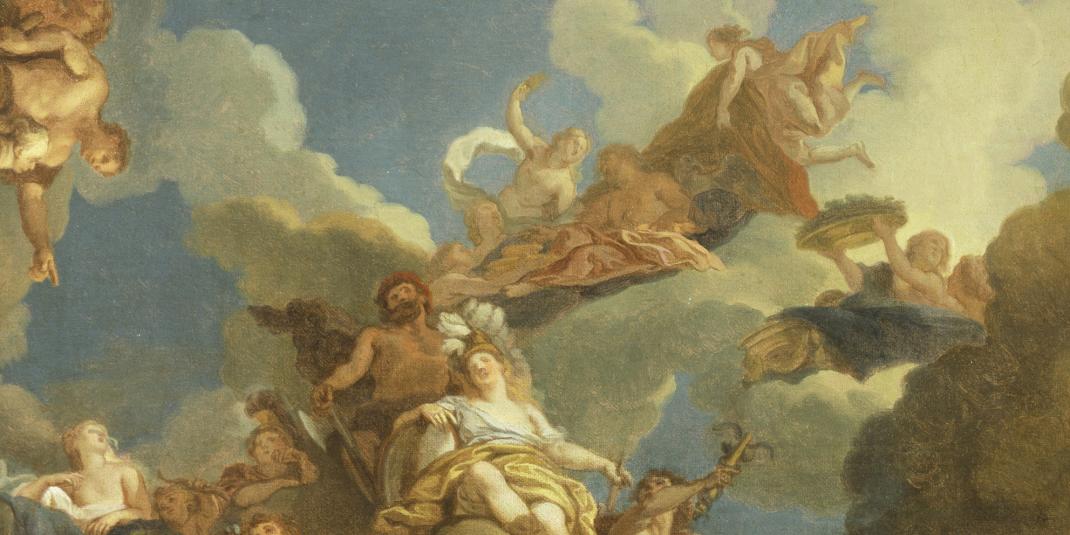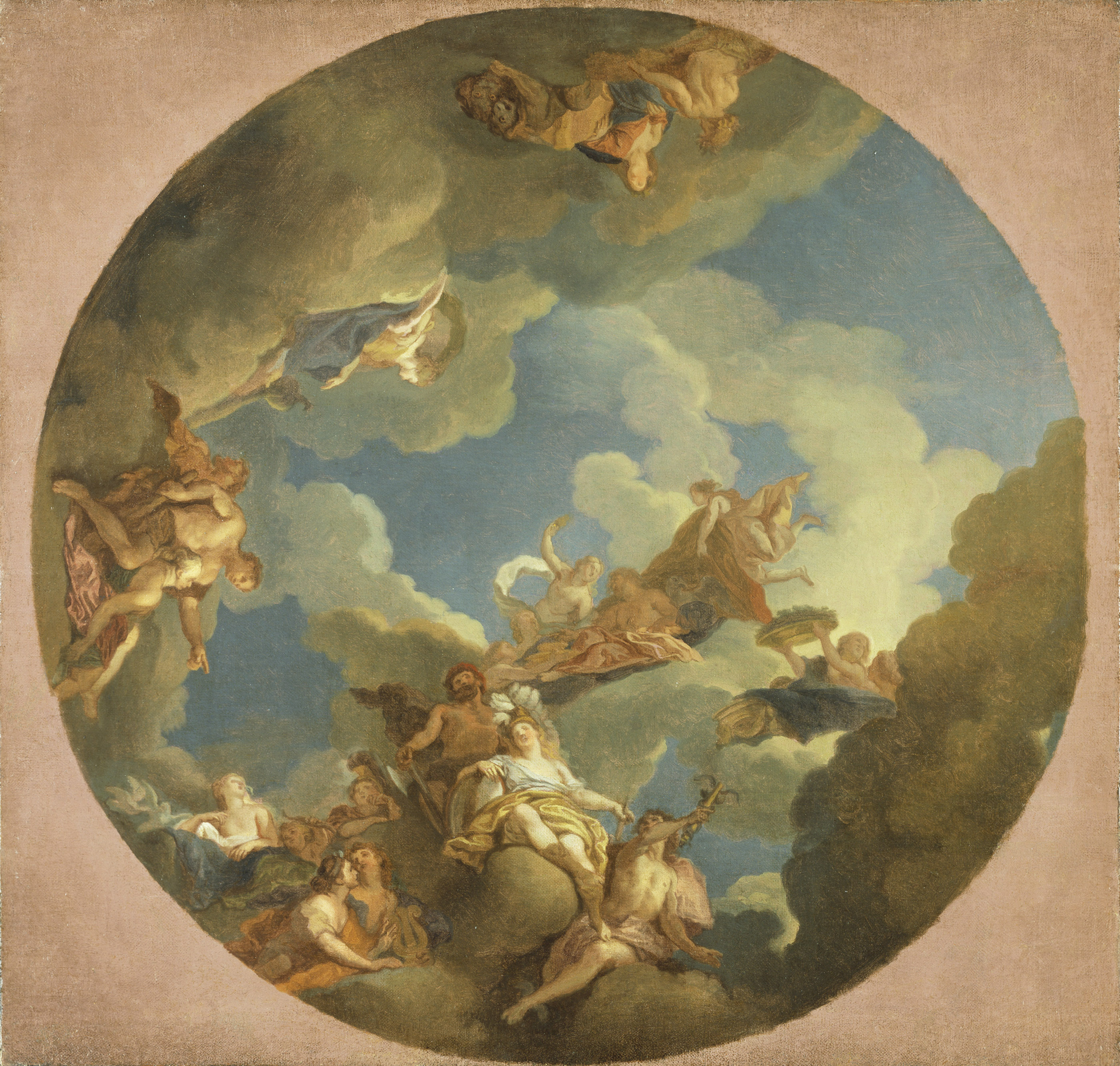
Charles De La Fosse (1636-1716)
The Birth of Minerva, ca. 1707
The work is a preparatory oil study for a fresco. Charles de la Fosse had painted it on commission of the wealthy merchant Pierre Crozat on the ceiling of his house in Paris. Unfortunately, it did not survive. The work depicts Minerva, the goddess of wisdom, armed with a helmet, shield and spear, triumphantly drifting among the clouds under the protection of Vulcan, the god of fire and the forge. Together with the reclining figure of Jupiter in the background and Mercury in the foreground, Minerva and Vulcan form an ascending stairway guiding the viewer’s gaze into the central section of the composition. In this central part lies the exhausted Jupiter, who, following the Greek legend, gave birth to Minerva from his brain, after Vulcan, upon Jupiter’s request, had sliced open his aching head with an axe. Around this centre are clouds and figures that are arranged like a vortex and lend the composition fluidity and motion.
The masterly oil study is infused with a sense of freshness and lightness foreboding the Early Rococo style, which had alleviated itself from the grandeur and weightiness of the Late Baroque. Here, the iconography of the Baroque period gives way to vivid depictions, featuring more graceful forms and brilliant colours expressing a new joie de vivre.
Charles de la Fosse, born in Paris in 1636 and deceased there in 1716, had received a multifaceted education as a painter, unifying the French, Flemish and Italian traditions of painting. He studied with Charles le Brun and from 1658 to 1663 continued his studies in Rome, Parma and Venice. These three particularly influential stages allowed him to combine the colourism of Titian and Rubens with the chromatic and formal delicacy of Correggio’s figures and the perspectival low angle views of the ceiling painting of Guercino, Pietro da Cortona and Giovanni Lanfranco to develop his own personal signature.
The work enriches the Hamburger Kunsthalle’s collection of art from the transition phase between Baroque and Classicism. This sketch by La Fosse tells of the joy and transiency of the era. It offers an insight into the preparatory phase of a low angle view of French ceiling painting of the so-called Louis XIV style. The waved line, a determining element of this painting and at the same time an essential feature of the rococo style, is commended in the tractates of Charles Alphonse Du Fresnoy (L’Art de Peinture, 1688) and William Hogarth (Analysis of Beauty, 1753) as a characteristic of grace and beauty. The long-neglected figure of La Fosse constitutes a significant stage of the »Grand Goût« of the 18th century leading up to the flourishing of the art of Boucher, Fragonard and Watteau.








